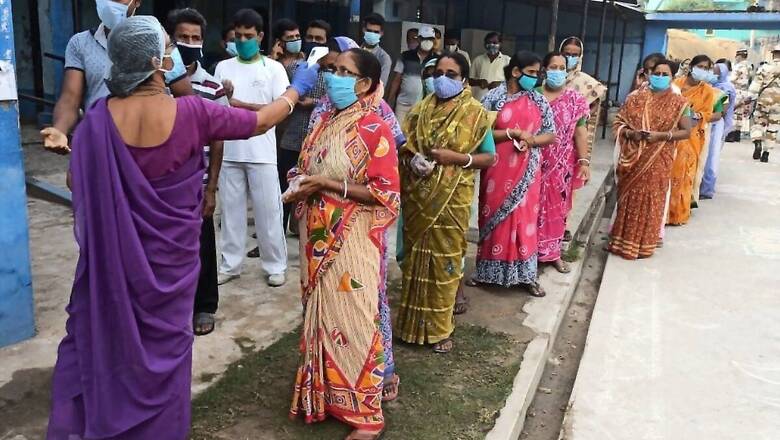
views
Tremors of a 5.4-magnitude earthquake near the India-Bhutan border were felt in West Bengal and Assam the night before the third phase of the assembly elections on Tuesday in the two states where several incumbents may find themselves on shaky ground amid fast-changing political realities and loyalties. While Bengal will have five more rounds of polling after this, it will be all wrapped up in Assam though both states will see counting of votes on May 2.
Voting is being held in both states following a slew of health protocols under the shadow of the Covid-19 pandemic. The Election Commission has marked all 31 West Bengal assembly constituencies where polling is being held on Tuesday as ‘sensitive’ and imposed prohibitory orders under Section 144 of the CrPC in these areas. A three-cornered contest is expected on many of the seats, with the Bharatiya Janata Party seeking to crack Trinamool Congress fortresses, and the Left Front-Congress-Indian Secular Front coalition looking to make its presence felt in areas where identity politics has gained ground. Among the key names in the fray are the BJP’s Swapan Dasgupta, TMC minister Ashima Patra and Communist Party of India (Marxist) leader Kanti Ganguly. The key contest will be for the Tarakeswar seat where Dasgupta will take on the TMC’s Ramendu Singha Roy and CPI(M)’s Surajit Ghosh.
The seats voting on Tuesday in Bengal are in the South 24 Parganas, Hooghly and Howrah districts, many of which have a high percentage of Muslim population, giving the TMC a distinct advantage. However, cleric Abbas Siddiqui’s ISF has got good resonance in these areas and is contesting eight out of these 31 seats. Siddiqui’s base of Furfura Sharif falls in the Jangipara constituency in Hooghly district and his brother Nawsad is contesting from the Bhangor seat in South 24 Parganas. Siddiqui has also campaigned aggressively on the 23 other seats which are being contested by the Left and Congress.
Political expert and professor of Jadavpur University Partha Pratim Biswas feels that, as compared to the first two phases of the elections in West Bengal, the bipolar narrative will not be applicable for the BJP in the third phase, at least in terms of votes.
“The BJP here talks about double-engine government but the model has failed in most of the BJP-ruled states,” he said. “PM Narendra Modi’s ‘achhe din’ is a distant dream. Similarly, the TMC talks about double-engine governance by relating panchayat and municipalities with the assembly polls. TMC leaders maintain that it will be good for the state if the panchayat, municipalities and assembly are run by them. Both are giving the bipolar narrative, but my question is, will the BJP be able to convince the people to go against the TMC on anti-incumbency grounds when a lot of TMC leaders (who once spoke against the BJP) like Suvendu Adhikari joined the saffron party? Unlike the Lok Sabha polls when the masses voted on anti-incumbency grounds against the TMC, how will the BJP justify the anti-incumbency factor now when it is contesting the polls keeping TMC turncoats at the front?”
According to author and political expert Dr Imankalyan Lahiri, the TMC has the edge in the third phase because of the large number of Muslim voters.
“See the third phase of polling is very important because most of the voters are pro-TMC in general which we have noticed in previous electoral results and also there are two important factors in this phase: minority votes and the caste-based votes,” said Dr Lahiri. “During the first two phases of the elections, these two factors were not that dominant (except a chunk of the tribal vote share). But in the third phase both these factors will play an important role in the electoral results because it is important for the TMC to consolidate these voters in its favour, bypassing the BJP’s ‘Vikas’ based political narrative in some of the districts, and also get the support of Muslim voters. For the BJP it will be interesting to see the results of the caste and religious divisions it has created in these clusters.”
Chief minister Mamata Banerjee’s party won 29 of the 31 seats in the 2016 assembly elections and also led in 85% of these in the 2019 parliamentary polls, when the BJP won 18 of the state’s 42 Lok Sabha seats.
In Assam, the final phase will see 40 seats in play, as the ruling BJP targets a second term. The state will have a mix of direct and triangular contests in the final phase with senior minister Himanta Biswa Sarma, and BJP state unit president Ranjeet Kumar Dass among the key candidates of the total 337 in the fray on Tuesday. The most important contest is in the Jalukbari constituency, where Biswa Sarma will take on Congress leader Romen Chandra Borthakur.
The 40 seats are spread across 16 election districts, located in Lower Assam and the Bodoland Territorial Region. In the region, the Congress has been able to maintain its tally at 11 in the last three elections. The party has put together a broad alliance, the Mahajot, which includes the All India United Democratic Front (AIUDF), Communist Party of India, Communist Party of India (Marxist), Communist Party of India (Marxist-Leninist) Liberation, Anchalik Gana Marcha (AGM) and Bodoland People’s Front (BPF). The BJP has tied up with the Asom Gana Parishad (AGP) and United People’s Party Liberal (UPPL). Jailed activist Akhil Gogoi’s Raijor Dal has joined hands with the Assam Jatiya Parishad. The newly floated AJP is contesting in 22 seats while there are 126 independents in the fray in the final phase.
Apart from speaking about the development initiatives taken by the “double-engine government”, the BJP has targeted the Congress for aligning with the AIUDF of Badruddin Ajmal, accusing him of encouraging illegal immigration from Bangladesh, leading to “land and love jihad”. The saffron party has promised to tackle these issues by bringing in legislation. The Congress in its campaign has underscored its ‘five guarantees’ of not implementing CAA, providing government jobs to five lakh youths, 200 units of free power, raising daily wages of tea garden workers to Rs 365 and giving a monthly allowance of Rs 2,000 to homemakers.
In the 2016 assembly elections, the Congress had a lead of more than seven percentage points over the BJP in terms of vote share on the 40 seats and its average vote share has remained around 27 per cent since 2006. This time, as many as 29 sitting MLAs, nine of them from the BJP and eight from the Congress, are contesting in the polls.
The crucial nature of this round of voting in Assam can also be gauged from the tight security as 320 companies of security forces have been deployed, the highest among all the phases.
(With agency inputs)
Read all the Latest News, Breaking News and Coronavirus News here. Follow us on Facebook, Twitter and Telegram.













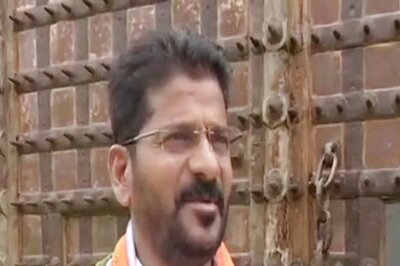


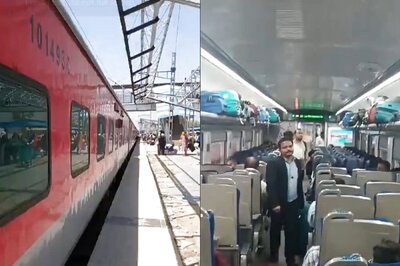
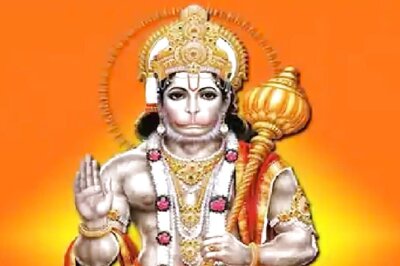
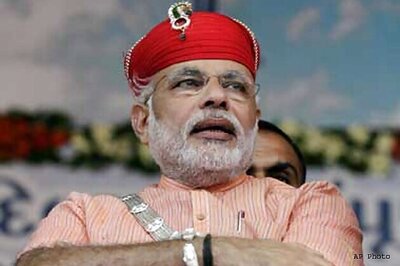

Comments
0 comment